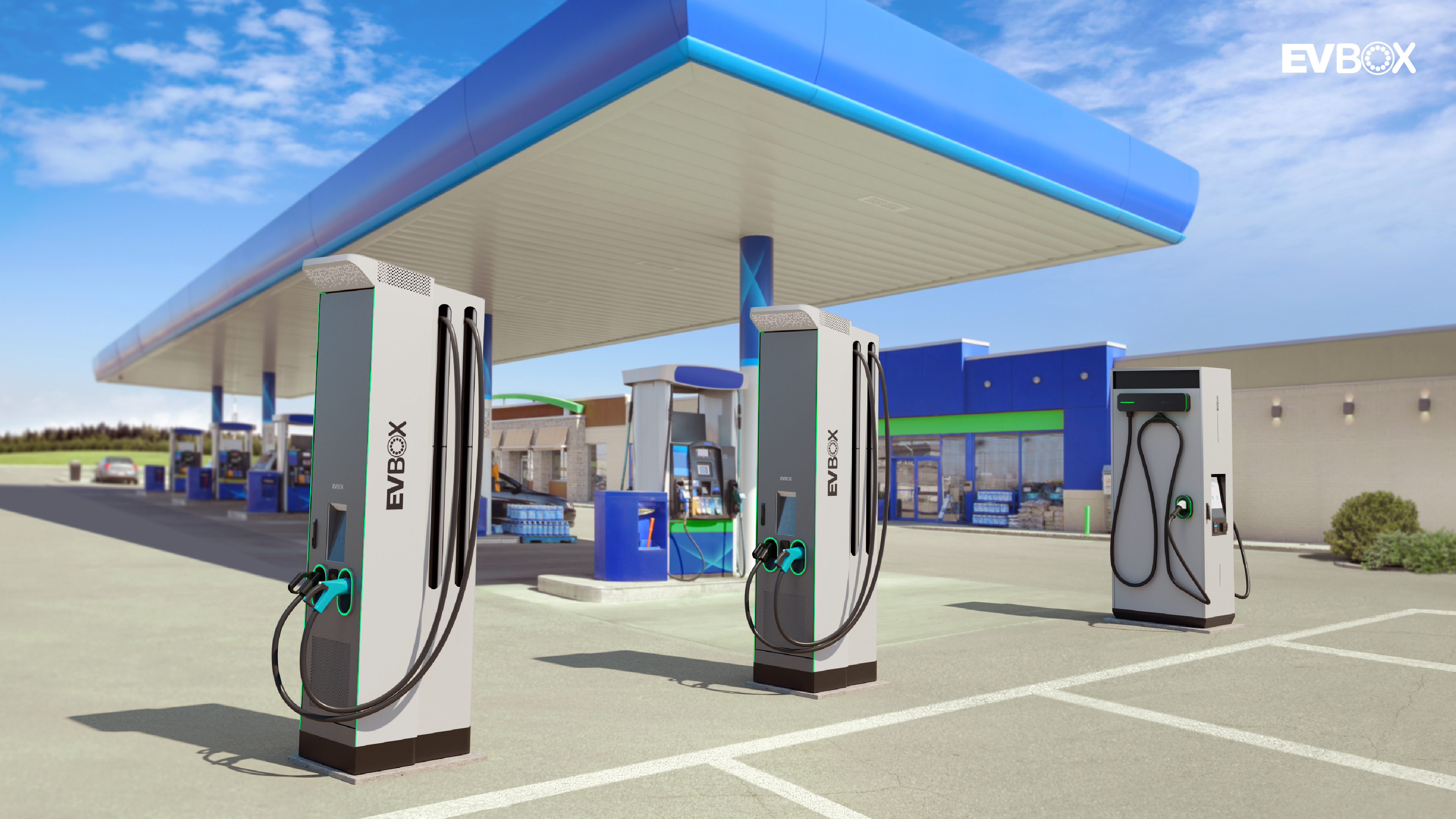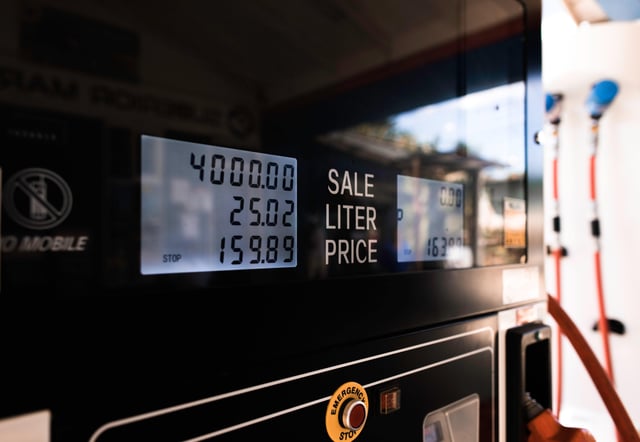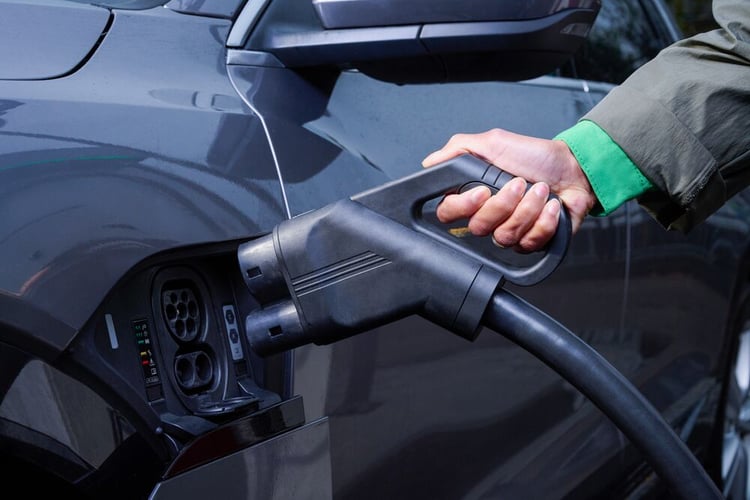
How electric fleet vehicles can benefit the fuel retail industry
All over the world, sustainability has become a larger focus for all types of businesses. As a result, many organisations are seeking ways to reduce their environmental impact. One key consequence of this trend is the transition away from internal combustion engines (ICE) vehicles, towards electric vehicles (EVs).
By now it’s clear that the EV market is booming. Beyond passenger cars, many businesses are electrifying their commercial fleets, including light commercial vehicles and heavy-duty trucks.
As we change the way we fill up our vehicles, fuel retailers find themselves in the middle of this transition. While margins on fuel tighten, and EV charging proves to be an increasingly more attractive opportunity, many fuel retailers are looking to diversify their offerings and future proof their businesses.
Thanks to their existing infrastructure and location along major transport routes, petrol stations are ideally positioned to attract and benefit from, not only passenger EV charging, but also commercial fleets.

The shift towards electric mobility goes beyond passenger vehicles
Whilst passenger cars are often the first thought of when it comes to the electrification of mobility, commercial vehicles actually represent a significant portion of emissions from transport.
Commercial vehicles can be broken down into light commercial vehicles, such as vans, and heavy-duty commercial vehicles such as trucks and lorries. As governments and businesses seek to achieve carbon neutrality, electric vehicles are already being deployed in commercial transport.
Globally, the International Energy Agency estimates that the number of light commercial electric vehicles will increase from about 10 million in 2020 to around 50 million in 2025, and almost 140 million in 2030. Heavy-duty electric vehicles are projected to increase to 1.8 million in 2030.

Commercial fleets also require charging
Sure, charging stations can attract high-income customers that can take advantage of a petrol station’s services during a charging break, and fuel retailers can benefit from electricity prices’ relative stability compared to the fluctuating fuel prices. However, it’s the commercial fleets shifting to electric mobility who offer an even more lucrative opportunity, as your business can meet their mid-route charging needs.
Currently, light commercial vehicles represent the biggest opportunity for electrification. Specifically, short-haul and last-mile delivery vehicles are particularly well-suited for EVs given their relatively short distances that can be covered with few or no charging stops.
Big logistic companies have noticed this opportunity and are aggressively electrifying their fleets. Amazon and USP, for example, have ordered 100,000 and 10,000 electric delivery vehicles respectively. DHL and FedEx are also electrifying their fleets to reach carbon neutrality, while IKEA has committed to making all home deliveries zero-emission by 2025. Looking ahead, it won’t be long before many other brands adjust to an electrified future.
As the stock of electric delivery vehicles increases, the demand for charging and charging infrastructure will grow exponentially. Whilst many fleets charge overnight, a significant proportion is likely to rely on mid-route charging, using public charging infrastructure. Beyond extending the service range of delivery vehicles, this solution is also attractive for fleets with limited space to install charging points at their depot and allows for the use of cheaper vehicles with smaller batteries.

How can fuel retailers benefit from electric fleet vehicles?
Currently, between countries there is a major gap in charging infrastructure. Even where chargers are available, they may be unreliable, too slow, or poorly positioned to meet commercial fleets needs. Fuel retailers, on the other hand, are perfectly positioned to fill this gap in the market, by leveraging their locations and existing infrastructure to install charging points, specifically Level 3 chargers (often called DC or fast charging stations).
Offer DC fast charging stations
Level 3 charging stations are the fastest types of EV charger and, depending on its power output, can charge an electric vehicle in minutes as opposed to the hours required by Level 1 and Level 2 chargers. As such, Level 3 charging stations are ideal for short stops along the motorways or at petrol stations for commercial fleets needing a top up.
Upsell other service
Beyond revenue from charging, fuel retailers can benefit from EV charging points by upselling their other services, such as food and beverage offerings, to drivers while they wait for their vehicle to charge. Given the higher margin on these compared to petrol, combined with electricity prices relative stability, EV chargers may actually increase fuel retailers profitability in the long run.
Use government incentives to reduce investment costs
Given the central focus electric vehicles play in government policy in reducing carbon emissions around the world, many offer incentives for building EV charging infrastructure. For example, tax exemptions or grants towards the purchase and installation of charging points, which fuel retailers can leverage.
Become part of mid-route charging strategies
Fuel retailers can also beat the competition by partnering with specific logistic or delivery companies to offer their fleets discounted charging rates. For fleets operating within a fixed area, this can be highly attractive as it saves them the installation costs for chargers. Fuel retailers, on their end, gain a predictable revenue source from the partnership, increasing their return on investment.
Fuel retailers can support the transition to electric mobility
As the transportation sector shifts away from ICE vehicles and towards electric vehicles, there is an urgent need to build out the charging infrastructure to support this transition. Fuel retailers are in a privileged position to leverage this trend, building on their existing infrastructure and strategic location around major roads.
As commercial fleets transition to electric mobility, serving their needs for mid-route charging is an attractive opportunity for fuel retailers to hedge risk and ensure consistent long-term revenue.
Related articles

Is DC fast charging bad for your EV battery?
While there is research that shows that frequent rapid (DC) charging can somewhat degrade the battery quicker than AC...

5 things you didn't know about EV batteries
There’s little doubt that electric mobility is the future. Electric vehicle (EV) sales have skyrocketed in the past few...

Electric car battery weight explained
How much an electric vehicle (EV) battery weighs depends greatly on the vehicle and model. On average, however, EV...
